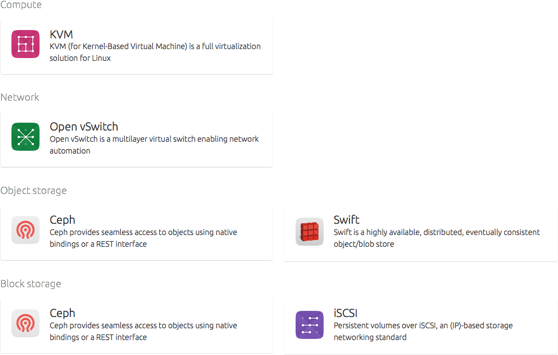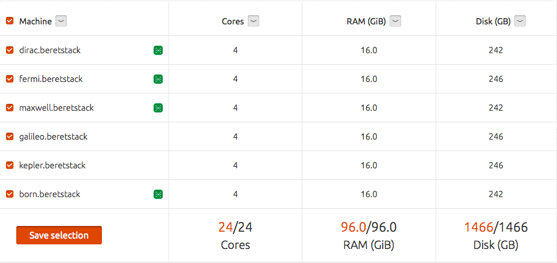Installing Canonical’s OpenStack Autopilot
OpenStack Autopilot is by far the best way to build and manage an OpenStack private cloud. Follow the instructions below to download, configure and install.
Set up your hardware
You’ll need at least five machines with two disks in each, two of which have two network interfaces (NICs).
Install Ubuntu Server on one of the machines with two network interfaces.
You need to setup a private network with all machines plugged in and enough IP addresses available for all physical and virtual machines you plan to run.
Add required repositories
From the command line type the commands below and follow the step-by-step instructions:
Install MAAS
To install MAAS, type the command below and follow the step-by-step instructions:
Create your admin credentials by typing:
- Login to the MAAS UI at http://
/MAAS/ - Go to the “Images” tab and import disk images for “14.04 LTS amd64”
- On the Account page, add your SSH key
- Go to the “Networks” tab and for each of the networks auto-created, click “Edit network” to add the default gateway and DNS server details
Configure the MAAS cluster
- Go to the “Clusters” tab, open the “Cluster master” link, hover over the row for the interface that is connected to the private network and select the edit icon (looks like a pencil —
)
- Set this interface to manage DHCP and DNS
- Set the “Router IP” to the default gateway
- Fill in details for the dynamic and static ranges, remembering to leave gaps for the floating IPs
- Dynamic range — that has as many IPs as there are total NICs connected to the network (minimum 15)
- Static range — that has as many IPs as there are machines connected to the network
- Floating IP range — that has as many IPs as instances that you’ll have in your cloud
Register your hardware with MAAS
Now you need to enlist and commission machines:
- Ensure all machines are set to PXE boot, if possible disable all other boot options, including local disk, in the BIOS
- Power the machines on so they will all appear in the “Nodes” tab of MAAS
- Edit each machine filling in the power type and parameters
- Select all the machines and, using the “Take action” dropdown, “Commission” them.
- Wait until all machines have a “Ready” status
Launch OpenStack Autopilot
Setup Landscape and launch the OpenStack Autopilot with the following commands:
- Create a new OpenStack Password
- Choose the “Landscape OpenStack Autopilot” option
- In the setup fill in your:
- Admin Email
- Admin Name
- MAAS Server IP
- MAAS API Key — which you can get from the “Account” page in MAAS
- When everything is installed, you will be given a link
- Open that link to access the Landscape UI
- Login with your admin email and OpenStack password

Review your checklist
At the bottom of the setup page there is a checklist with the status of all of your resources. These should all be green, if it isn’t follow the instructions to resolve

Choose your OpenStack components

Select the hardware on which to deploy the cloud

Select “Install” to start building your cloud

Create an OpenStack account to access your Horizon dashboard

Monitor your region and scale out

Need more help?
Let our cloud experts help you take the next step. Contact us ›
Already a Landscape Dedicated Server customer? Upgrading is simple, see the instructions in the 发行说明.
